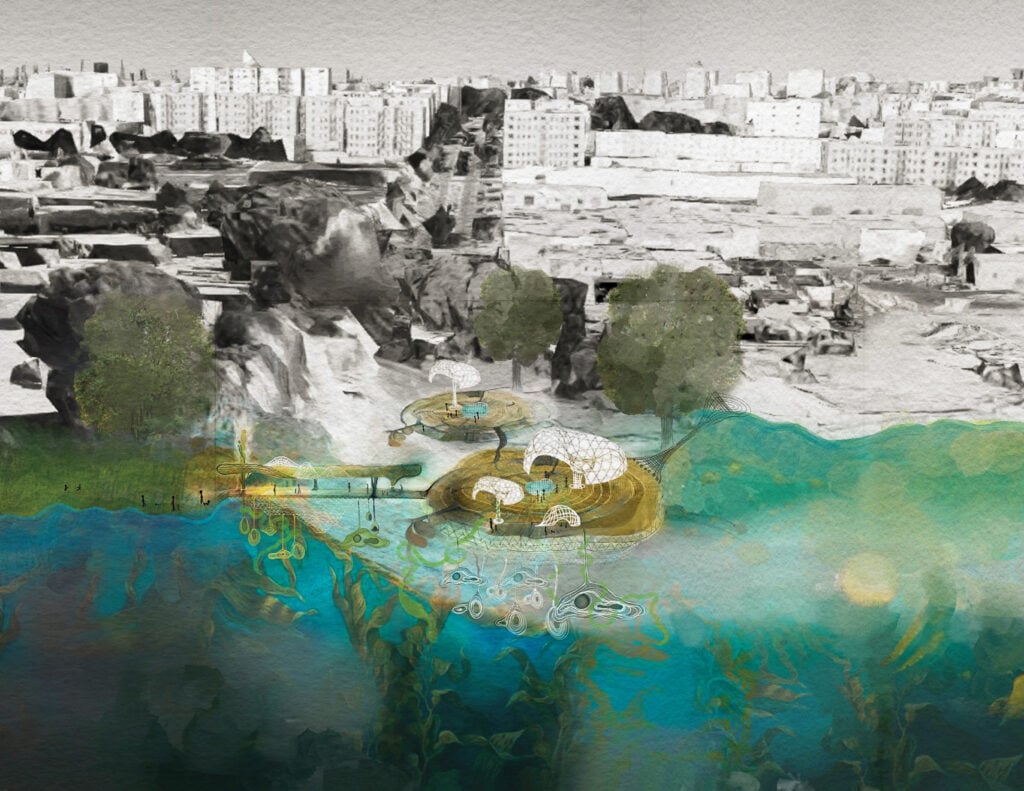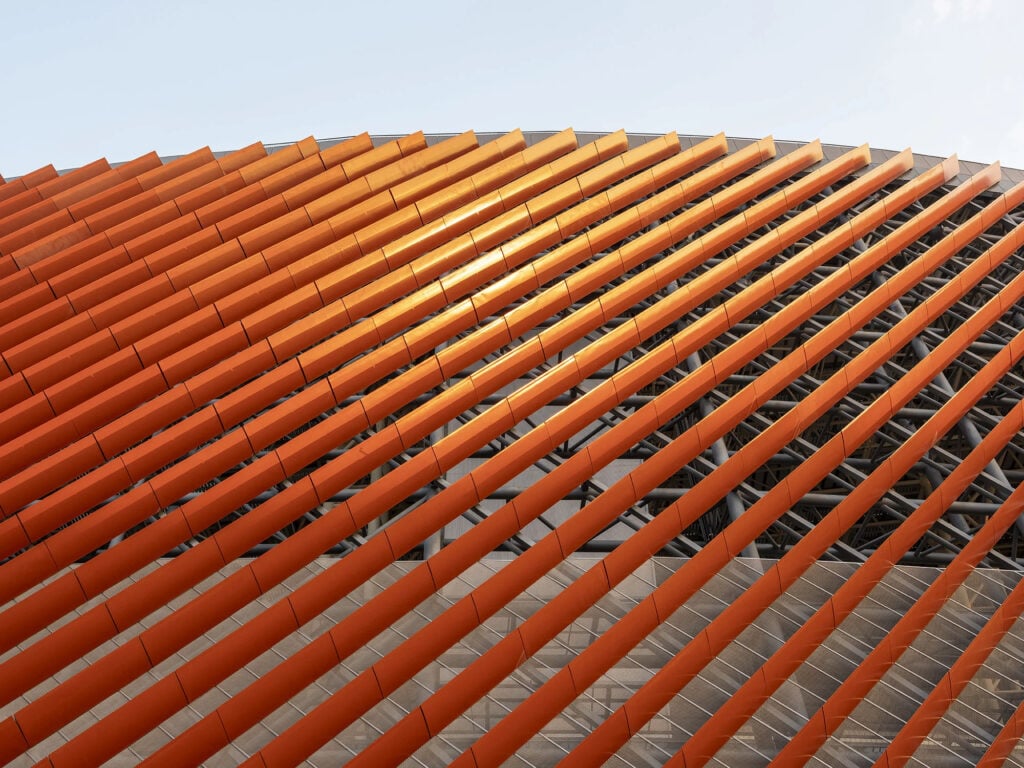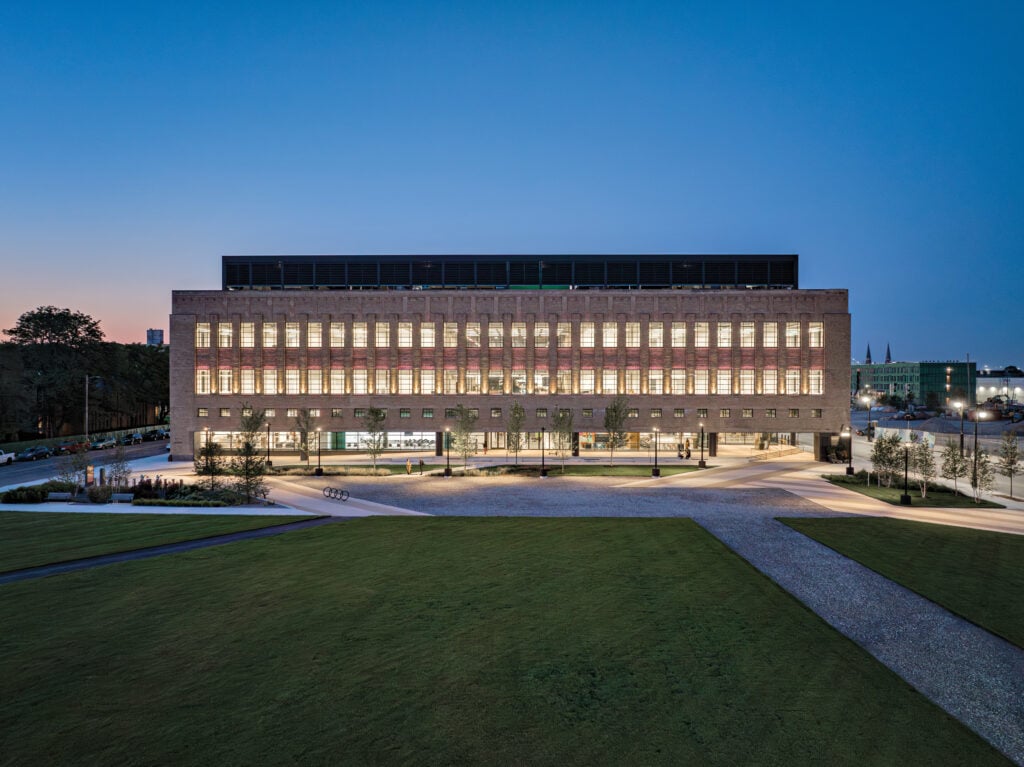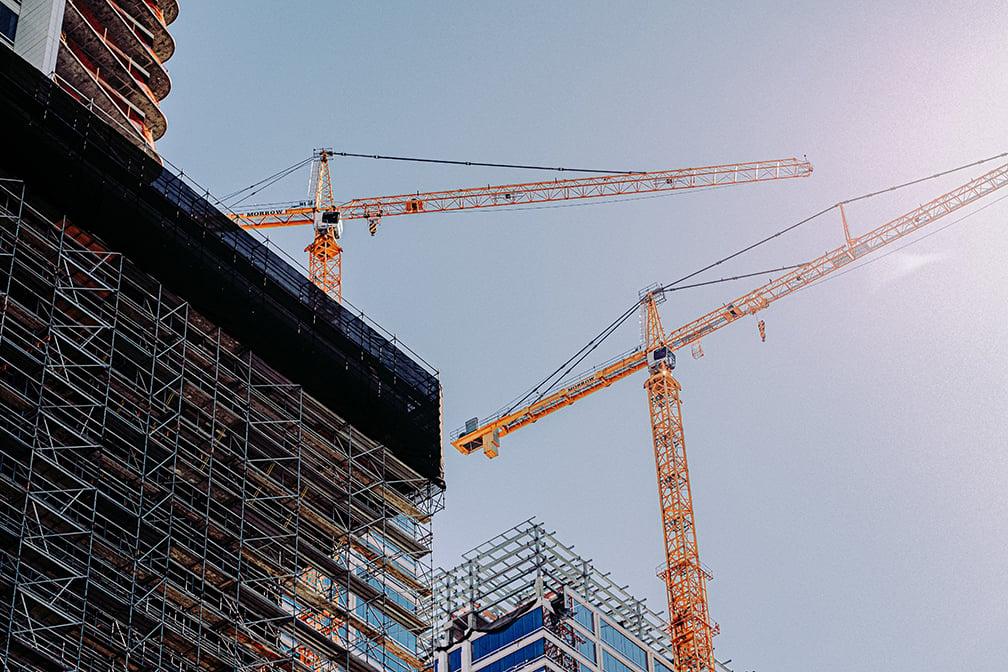
December 28, 2021
The 2021 Building Boom That No One Talked About
Amidst the flood of actual buildings, big and small, good and not-so-good, we have spent relatively little time truly looking at them.
Ian Volner
As impressive as the numbers are, they don’t tell the full story of the 2021 building boom. The onset of the epidemic economy created an operational bottleneck: countless major projects had been stuck in the pipeline during the long shutdown. As reopening picked up pace early this year, hordes of new and newly renovated cultural venues, commercial developments, and public buildings threw open their doors, while plans for still more were finally unveiled after lengthy delays. For the architects riding the wave, it’s been almost too much of a good thing. Consider, for example, a single ten-day interval in late October, when Frank Gehry debuted his Youth Orchestra of LA concert facility, Curt Fentress and Machado Silvetti launched their Denver Art Museum expansion, and the Studio Museum announced it had scrounged up another $210 million for its future David Adjaye-designed home in Harlem. By the time Herzog and de Meuron completed two major arts centers in East Asia, Hong Kong’s M+ Museum and Seoul’s ST SongEun, Halloween had not yet arrived. People barely seemed to notice.
And it’s not just the number of ribbons getting cut and grounds getting broken. For the first time ever, the aggregate volume of monthly government-funded construction (state, federal and local, including everything from sidewalks to courthouses) in the United States is on target to pass the $400 billion mark. Bucking a decades-long trend, public investment is poised to grow in tandem with the economy as a whole, rather than just bumping along till the next recession prompts another round of stimulus spending.
In large measure, this is due to what may well stand as the most consequential political development of 2021: the $1.2 trillion Infrastructure Investment and Jobs Act (IIJA), signed into law in mid-November. Battered, bruised, value engineered within an inch of its legislative life, IIJA nonetheless represents the largest-ever one-time down payment on the nation’s built environment—a third bigger than the Obama Administration’s 2009 American Recovery and Reinvestment Act, bigger even (as a percentage of nominal GDP) than the prime infrastructure component of FDR’s 1933 National Recovery Act. We won’t know the real products for some time, but civic buildings will certainly be top of the list—schools and hospitals and government offices and land ports.
New Deal policy milestones gave rise to celebrated buildings in towns and cities all across the country, like the austere Deco grandeur of the 1930s Tennessee Valley Authority, while the Obama years produced, albeit on a much smaller scale, their own successful public works, like NBBJ’s 2012 federal courthouse in Bakersfield, California. The new law seems bound to produce its own landmarks, while ensuring that the 2021 boom keeps rumbling for a while yet.
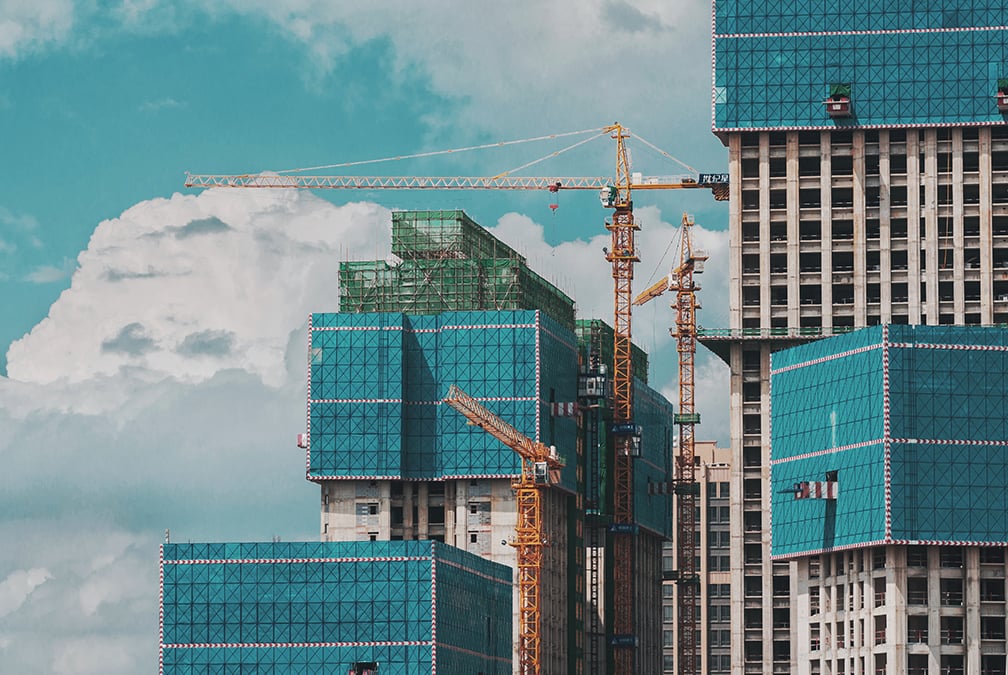

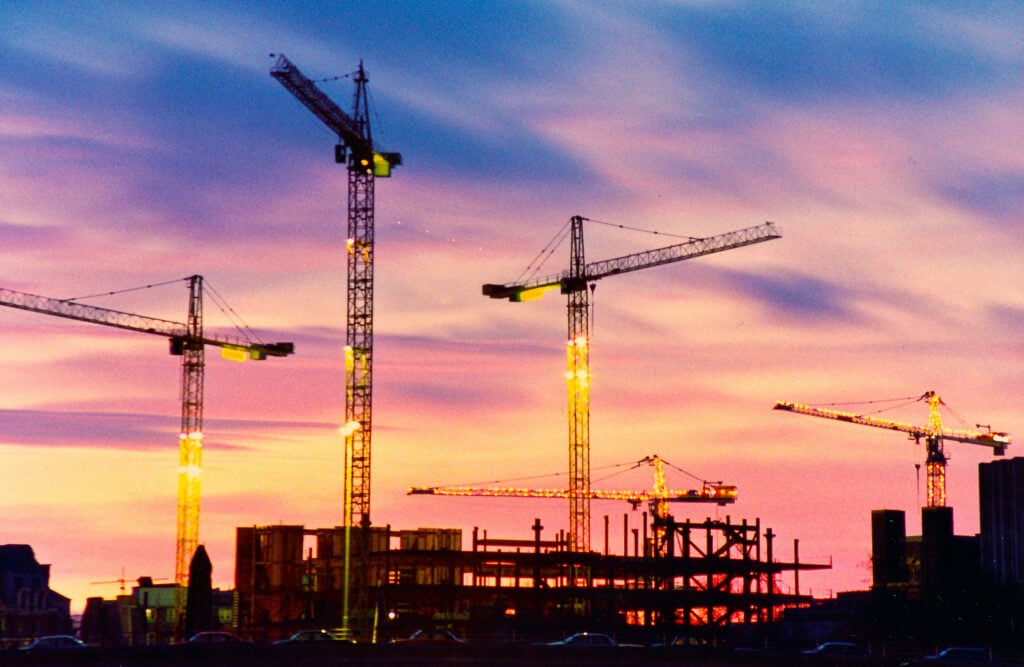
Much of the hoped-for results will be years in the making. But already the statistics and headlines seem to square with the observable facts on the ground: At least from where I’m observing, right now, looking out a South Bronx window at a major highway repair project, three new subsidized apartment towers going up, and a commuter railroad that, as of just this week, was slated to get four new stations in the borough.
In big cities, it’s usually easy to tell when a private-sector building boom is in the offing: tall towers shoot into the sky, followed swiftly by soaring rents. It’s a little harder to know when there’s a civic boom in the offing, in part because the phenomenon is so rare in the American experience. Yet in 2021, we’ve almost certainly been living through both. Even the private-sector gains of the past year would be all but unimaginable without yet another act of Congress, the $1.9 trillion pandemic rescue package, which pumped desperately needed cash into American pockets, keeping the lights on at construction sites from coast to coast, and keeping the AIA billings index above the crucial fifty mark since February.
All of this places us, to a large extent, in uncharted waters. We know (rather too well) how speculative building frenzies can eventually go bust. But we don’t necessarily know what the downsides of supercharged public investment are likely to be. Could we be looking at a return to post-Great Society, post-Vietnam inflation? Recent indicators give some cause for concern—but then the example of the 1930s suggests just the opposite, pointing to the enduring, positive effects of ambitious infrastructural improvements after a lengthy period of disinvestment. The train stations, apartment buildings, and museums of 2021 could turn out to be the monuments of the future, the proudest endowment of this generation to the next. They could also turn out to be the embarrassing relics of a diseased state and a failed culture. It all depends on an economic picture that, besides being unusually hazy at the moment, is more than usually subject to the interpretive whims of whomever happens to be looking at it.
Which brings us to one final issue, a key topic in the last year and no doubt an important one for the year to come. However the bumper crop of 2021 buildings ends up being received by a far-distant posterity, we must begin the process of receiving and analyzing them—and coming to terms with their impact— sooner rather than later. And in this we—and by that I mean all of us: the writers and the readers; the designers and the reply guys ‘n’ gals; everyone with a hand or a voice in what constitutes architectural discourse today—have been largely remiss since at least last January.
Amidst the flood of actual buildings—big and small, good and not-so-good—we have spent relatively little time truly looking at them, and a great deal more time prosecuting increasingly obscure intellectual turf wars, endlessly escalated in a meme-based arms race on battlefields like Facebook and Twitter. No, every single low-cost housing high rise does not merit its own in-depth design review, and even many important infrastructural interventions won’t really lend themselves to flights of reader-friendly prose. Yet it often happens that even thoughtful conversations on matters of policy and politics can float off into cloudy abstractions that obscure the changing landscape sitting right before us. This, in turn, begets it own political problem, feeding a sense of apathy and cynism among the broader public, who are left with the impression that nothing, and definitely nothing good, is being done in its name. The resulting apathy only makes it that much harder to muster support for more and better architecture and infrastructure.
The obligation, not even to opine, but to simply document what is being built is an essential one at all times, but especially now and especially for those of us who believe (whatever our philosophical reservations and critical cavils) that architecture is first and foremost a theater for civic action. An enhanced focus on documentation will not only give us a clearer picture of what, exactly, is going on, but it can leave us better equipped to address all the pressing problems—increasing worker burnout, growing labor agitation, the lingering immigration policies of the last administration—that lie behind architectural production. How can we properly reckon with our historical predicament without writing a thorough first draft of history?
It isn’t easy to make the case for paying attention, and the contemporary mediascape doesn’t make it any easier. Nonetheless, if we want to see more public-minded architecture in 2022 and beyond, we have to keep architecture on the public’s mind.
Would you like to comment on this article? Send your thoughts to: [email protected]
Latest
Profiles
Zoha Tasneem Centers Empathy and Ecology
The Parsons MFA interior design graduate has created an “amphibian interior” that responds to rising sea levels and their impacts on coastal communities.
Viewpoints
How Can We Design Buildings to Heal, Not Harm?
Jason McLennan—regenerative design pioneer and chief sustainability officer at Perkins&Will—on creating buildings that restore, replenish, and revive the natural world.
Products
Behind the Fine Art and Science of Glazing
Architects today are thinking beyond the curtain wall, using glass to deliver high energy performance and better comfort in a variety of buildings.



